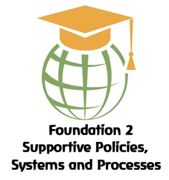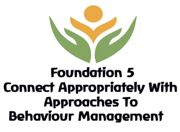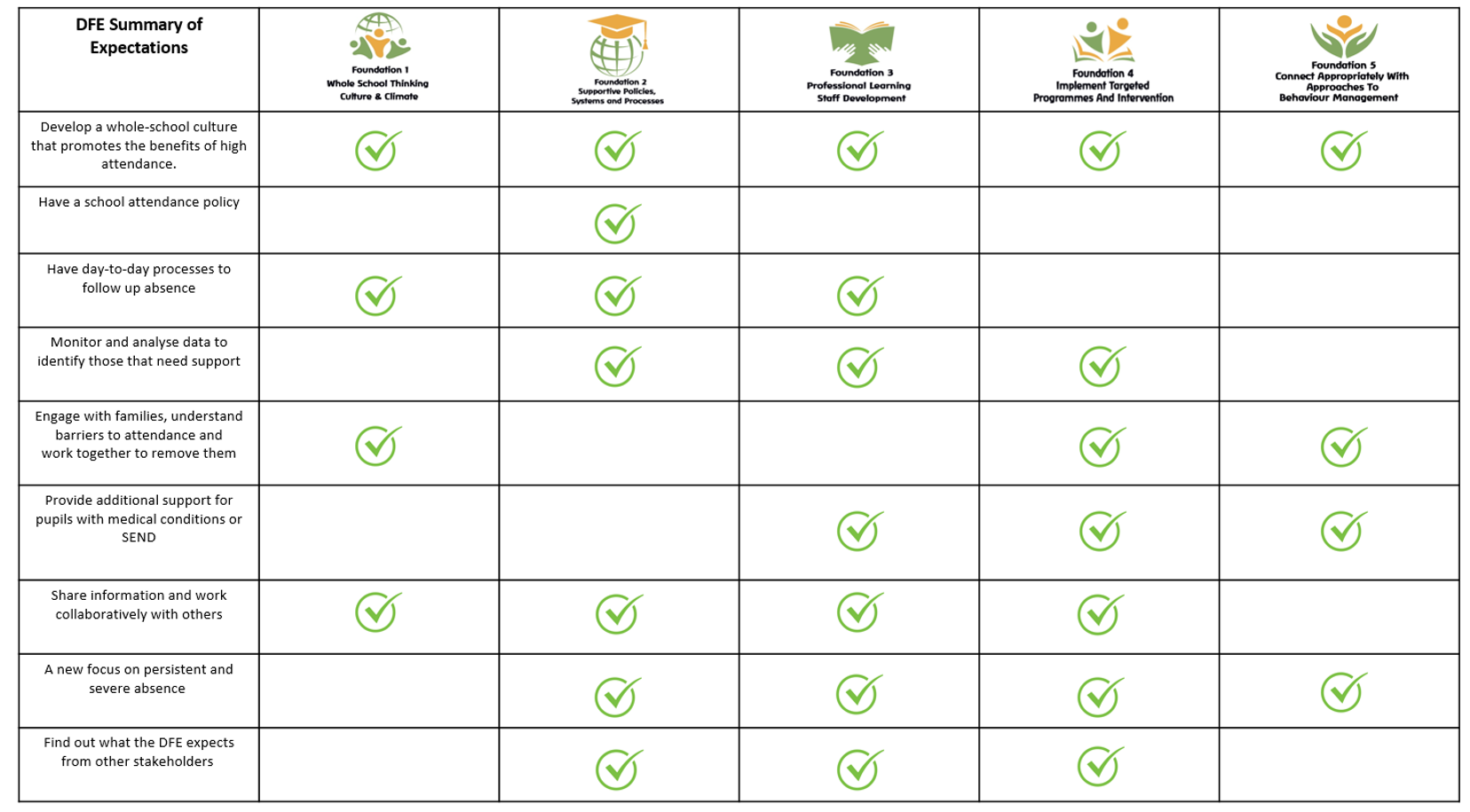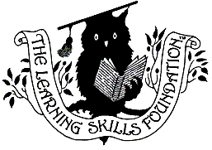- Home
- Parents
- Attendance and Behaviour
Attendance and Behaviour
Please click on the link below to access the Whole School Attendance letter:
Whole-school-letter-September-2025-AF.docx
Going to school regularly is important for your child’s future. Parents are responsible for making sure their children receive full-time education. Talking to your child and their teachers could help solve any problems if your child does not want to go to school. Brownmead Primary school has achieved above the national expectation for attendance and closed the gap to Persistent Absenteeism rapidly.
Regular school attendance
Good attendance shows secondary schools and future potential employers that your child is reliable.
Brownmead Primary school records details of all children’s attendance and absence at school. We must do so at the beginning of morning and afternoon sessions. If your child is absent, you must tell the school why immediately.
The school will record the absence; the Local Authority will receive this information for each child. The Department of Education also receives annual attendance data for the school.
Your responsibilities as a parent
By law, all children of compulsory school age must receive a suitable full-time education. For most parents, this means registering their child at a school – though some choose to make other arrangements to provide a suitable, full-time education.
Once your child is registered at a Brownmead Primary School, the parent is legally responsible for making sure they attend on a regular basis. If your child does not attend school on a regular basis you could get fined or be prosecuted in court.
How to prevent your child from missing school
You can help prevent your child missing school by:
- making sure they understand the importance of good attendance and punctuality
- taking an interest in their education – ask about school work and encourage them to get involved in school activities
- discussing any problems they may have at school and letting their teacher or principal know about anything serious
- not letting them take time off school for minor ailments – particularly those which would not prevent you from going to work
To avoid disrupting your child’s education, you should arrange appointments and outings:
- after school hours
- at weekends
- during school holidays
- You should not expect Brownmead Primary School to agree to your child going on holiday during term time.
Support on school attendance
A child’s school attendance can be affected if there are problems with:
- bullying
- housing or care arrangements
- transport to and from school
- work and money
If your child starts missing school, you might not know there is a problem. When you find out, ask your child and then approach their teacher or the school attendance team.
Warwickshire Attendance Service.
The Warwickshire Attendance Service (WAS) are a Trade Service and commissioned by the WHMAT. WAS representatives have a role to play in ensuring that children and young people are adequately supported in improving their attendance where required. Each year WAS will work in partnership with the Attendance Leader and School Attendance Officer to support attendance of children within the school and families. The WAS representative will:
- Further support in developing systems to ensure consistency and uniformity in communication and sharing key information.
- Support a tiered approach to escalation to improve attendance and deliver legal intervention.
- Support in monitoring absence and day to day procedures defining clear roles and responsibilities.
- Provide capacity in monitoring children identified as requiring early intervention (95% attendance).
- Evidence and review documentation to support any legal process.
- Support data analysis.
- Warwickshire Attendance Service will adhere to and ensure that the Birmingham City Council Fast-Track guidance is implemented within the school.
The Strategic Approach
Brownmead Primary School adopts the WHMAT 5 Foundations of Effective Attendance Practice framework, this is modelled on the work of Professor Katherine Weare. The emphasis is on developing a school culture and climate which builds a sense of connectedness and belonging to ensure all children can attend school and thrive. The approach ensures we prioritise building solid working relationships with children / parents prior to any escalation. The staged approach ensures we identify triggers early that can lead to poor attendance issues such as; mental health issues, lack of trust, communication and relationship breakdowns and the possible lack of networking opportunities both internal (in-school) and external (external agencies).
Aims of the Attendance Support Programme
- Increase school Attendance and reduce Persistent Absence to meet set targets.
- Ensure Attendance is well managed within the school, with the appropriate level of resources allocated.
- Enable the school to make informed use of Attendance data to target interventions appropriately, focusing on the key demographic groups highlighted in the 2022 DFE paper.
Objectives
- To create an ethos in which good Attendance is recognised as the norm and every child / young person aims for excellent attendance;
- To ensure Attendance and Punctuality is a key priority:
- To set achievable targets to improve key demographic groups and individual children’s Attendance and PA.
- To embed a framework which clearly identifies Key Performance Indicators aligned to a bespoke action plan.
- To develop a systematic approach to gathering and analysing relevant attendance data – proactively implementing targeted support programmes to remove barriers regarding school attendance.
- To develop effective partnership with external agencies and reviewing their impact.
5 Foundations of Effective Attendance Practice





Foundation 1 - The school has a fully embedded ethos in which excellent school attendance is expected, developed and nurtured. An escalated approach ensures the school has a deeply embedded and consistent whole school approach to improving attendance.
Foundation 2 - The approach to improving attendance is built on solid policies, systems and processes; this ensures sustainable and continuous improvement drives practice. Succession planning is built around an effective systems leadership model - rather than that of an individual Attendance Leader. The Attendance Policy drives school practice, it is deeply embedded in daily practise and ensures the school sets, and maintains, high expectations to improve the culture of attendance.
Foundation 3 - The school prioritises developing a fully engaged team of attendance experts; with a shared vision and core purpose. Through this development the Attendance Leader will raise the status of attendance and ensure improved attendance is both sustained and continuous. CPD will support staff at all levels to fully understand their role in supporting attendance. The development of external partnerships will support attendance improvements through a multi-disciplinary approach for identified children and families.
Foundation 4 - Data information and analysis direct resources proactively towards key demographic groups and identified individuals. The expert use of data analysis informs decision making at all levels. A rigorous and effective attendance cycle ensures the Attendance Leader not only captures key information but also further understands the ‘deeper roots’ that creates barriers regarding attendance to school.
Foundation 5 - Connecting and belonging drives the school approach to supporting attendance - this is deeply embedded in an evidence-based approach. The school has effective routines in place that are followed by staff. Staff at all levels within the school understand the 'deeper roots' regarding poor attendance and this is supported through a systematic approach. The school has developed, and embedded, an effective rewards system to further drive attendance improvements and celebrate success.
DFE: Working Together To Improve Attendance 2022.
From September 2022 the DFE: Working Together To Improve Attendance paper will replace all previous guidance on school attendance except for statutory guidance for parental responsibility measures. The Secretary of State has committed to it becoming statutory when parliamentary time allows (this will be no sooner than September 2023).
The table below identifies how the 5 Foundations of Effective Practice will underpin the DFE 2022 paper. 
Behaviour
“Good behaviour is a necessary condition for effective teaching to take place.”
Aims
We believe that all children should be aware of the standards of behaviour that are expected of them and that working with children we will help them to take responsibility for promoting these standards. We hope that by encouraging positive behaviour patterns we can promote good relationships throughout the school built on trust and understanding, and that through the use of this policy we can support all of our children in developing a high level of individual and social responsibility. The key aims of the school are to:
- To create a culture of exceptionally good behaviour: for learning and for life.
- To ensure that all learners are treated fairly, shown respect and to promote good relationships.
- To use “affective language “which encourages the learner to engage positively and understand the impact of their behaviour.
- To help learners take control over their behaviour and be responsible for the consequences of it.
- To build a community which values kindness, care, good relationships and empathy for others.
- To ensure that excellent behaviour is a minimum expectation for all.
Our School Rules: Ready, Respectful, Safe
Be Ready – to learn.
- We arrive at school on time, every time.
- We get to lessons on time.
- We wear our uniform with pride and have the right clothes for PE and playing outdoors.
- We make sure we have the right equipment for all lessons.
- We take part fully in lessons and show resilience.
Be Respectful – to everyone.
- We always listen when an adult is talking.
- We are polite and show good manners to everyone.
- We respect difference and know we are all equal.
- We look after our equipment and share it.
- We look after our environment and never drop litter.
- We queue sensibly in the dining area and always tidy up.
Be Safe – at all times.
- We follow instructions – first time, every time.
- We stand up to bullying of any kind.
- We walk sensibly around our school.
- We know who to go to for help and support.
- We stay safe online and outside school.
Standards of behaviour
The school understands that the first step to modelling good behaviour is to lead by example, which means that all staff, volunteers, and anyone else who comes to the school must act responsibly and professionally, and will never denigrate children or colleagues. We work hard to ensure that discipline is consistent across the school so that behaviour boundaries and sanctions are clear to all and are applied fairly, proportionately, and without discrimination, taking into account SEN needs and disabilities as well as the additional challenges that some vulnerable children may face. Staff are trained to deal with behavioural issues as part of their continual professional development.
We work with parents to understand their children and their behaviour and believe that in conjunction with behaviour boundaries and sanctions, good support systems, praise, and rewards for good behaviour are an important part of building an effective learning community. The school will report behaviour, good or bad, to parents regularly. We encourage parents to communicate with the school if they have a concern about their child’s behaviour, and we will do as much as is possible to support parents as and when they need it. We promote good behaviour within the school curriculum and reminders of expected standards of behaviour are up on walls in classrooms and situated around the school.
Staff must be a constant presence around the school, in-between classes, during breaks in the school day, and at lunch times in order to check that children are using the school grounds respectfully and behaving appropriately. This will support the building of positive relationships outside the classroom.
Consistency in practice
- Consistent language; consistent response: Referring to the agreement made between staff and learners, simple and clear expectations reflected in all conversations about behaviour. Ready, Respectful, Safe
- Consistent follow up: Ensuring ‘certainty’ at the classroom, middle and senior management level. Not passing problems up the line, teachers taking responsibility for behaviour interventions, seeking support but never delegating.
- Consistent positive reinforcement: Routine procedures for reinforcing, encouraging and celebrating appropriate behaviour. Verbal, phone calls and postcards for above and beyond,
- Consistent consequences: Defined, agreed and applied at the classroom level as well as established structures for more serious behaviours.
- Consistent, simple rules/agreements/expectations referencing promoting appropriate behaviour, icons, symbols and visual cues, interesting and creative signage All staff reinforcing rules and modelling good behaviour.
- Consistent respect from adults: Even in the face of disrespectful learners!
- Consistent models of emotional control: Emotional restraint that is modelled and not just taught, teachers as role models for learning, teachers learning alongside learners
- Consistently reinforced rituals and routines for behaviour around the site: In classrooms, around the site, at reception.
- Consistent environment: Display the quality of a good primary school, consistent visual messages and echoes of core values, positive images of learners
Key steps and actions in tackling behaviour
- Redirection – a gentle encouragement, a ‘nudge’ in the right direction.
- Reminder – a reminder of the expectations. Ready, Respectful, Safe delivered privately. Repeat reminder if necessary. De-escalate and decelerate where reasonable and possible and take the initiative to keep things at this stage.
- Caution A clear verbal caution delivered privately wherever possible, making the learner aware of their behaviour and clearly outlining the consequences if they continue.
- Use of the behaviour card pathway – the class teacher will issue a card respective of the behaviour being demonstrated. At each stage children can correct their attitude and ‘get it right’. The emphasis is on the child to correct their behaviour before the teacher escalates the card system.
- Reparation – a restorative meeting or phone call home should take place within 24 hours. This is to inform parents of any behaviour concerns and build positive relationships to tackle concerning behaviours. Senior leaders will contact parents if the behaviour is a high concern or the behaviour is continually repeated.
- Formal – A meeting with the Assistant Head, Deputy Head or Head teacher recorded with agreed targets that will be monitored over the course of two weeks.
Going For Gold
Going for Gold is the Brownmead pathway to reward expected behaviour and behaviour which is ‘above and beyond’ the expected behaviour. We want all of our children to “Go for Gold.” If a child receives a Gold Award, they will be awarded a Golden Badge, they will receive a certificate during Good Worker assembly for that week. We want our children to understand that there are always consequences to our actions, therefore we have both positive and negative consequences, according to our behaviour choices.
Rewards and sanctions must be age appropriate and should reflect the level of behaviour. They must be attainable for all children and not just for a selected few. Rewards will normally be public praise for good behaviour, effort or recognition of quality work. Rewards will never be taken away from a child.
Specific rewards include:
- Name on the recognition board in the classroom.
- House tokens given for good corridor, playground or classroom behaviour
- A written comment on work with specific points picked out for comment
- An individual token award e.g. Sticker.
- A visit to a more senior member of staff for positive commendation.
- A public word of praise in front of a group, class, key stage or the school.
- Public written acknowledgement through good worker assemblies.
- School Certificates, formally presented.
Please click on the link below to view the Positive Conduct and Behaviour PowerPoint and Wall Display.
Please click on the link below to view the School Charter (RRS):
Documents
| Page Downloads |
|---|
| Whole school letter September 2024 AF updated for Sept 2025 |









